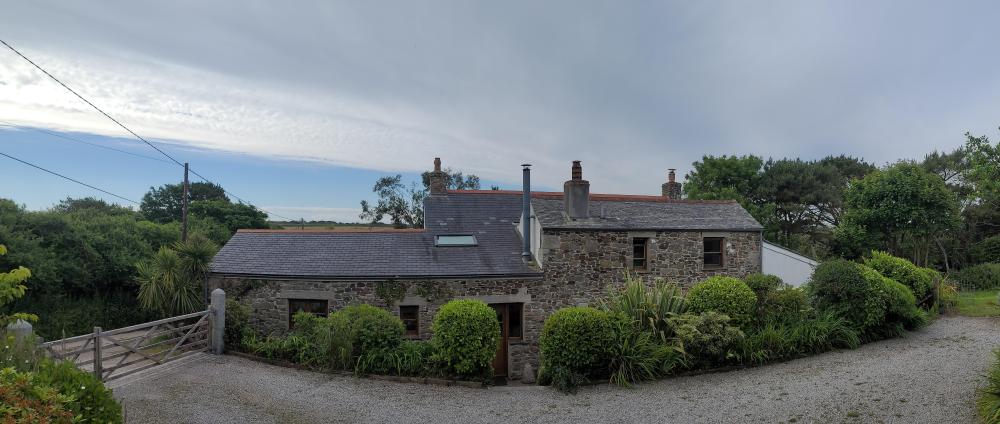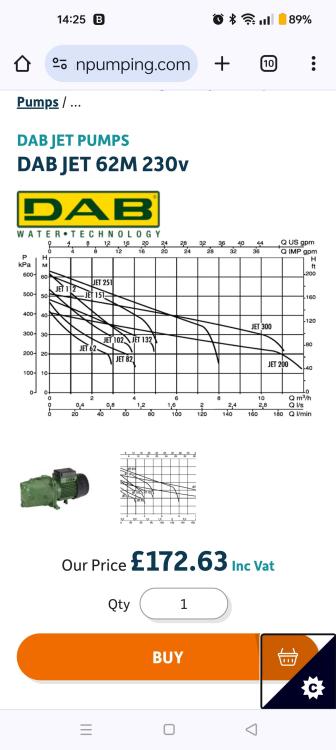Leaderboard
Popular Content
Showing content with the highest reputation on 07/21/24 in all areas
-
There WAS robust scientific debate, conclusions had to be drawn to try to protect the statistically greatest number of people against an unknown, so there was always going to be a complicated risk/ benefit analysis. Air travel and climate change will contribute to the next pandemic, no question. Insect vectors for diseases from the tropics are migrating further, so let’s hope the RNA vaccine research continues apace. The One Health initiative draws medics, vets and environmental scientists together to develop policies on antibiotic and agrochemical stewardship for example. Scientific collaboration is key to developing meaningful policies and subsidising the STEM subjects at degree level to motivate and educate the next generation who will be most affected, is my hope for the future.2 points
-
2 points
-
2 points
-
Firstly many thanks to those who have both set up and contribute to this forum. I'm a geophysicist turned builder who is returning to the UK from overseas and about to start a Cornish Cottage Renovation and Extension project. I'm very much interested in all things heating related especially GSHP technology, insulation, UFH and heat storage. I look forward to some sound evidence based discussion that cuts through all the cowpoo associated with some of this technology. All the best Stephen1 point
-
Only space below the invert counts as soakaway. If it was to fill above this then the pipes are not emptying. As french drains they will drain of course, but then what purpose has the soakaway? If the water is all clean, then little harm. If dirty then pipes and soakaway will clog in time. I suggest draw it as a cross section, and show water at various levels.1 point
-
Sorry to burst your bubble but the motor can only turn clockwise or anticlockwise, there is no Third Way! 3 of the wiring options give one and the other 3 the other as upthread. There is no more to be had, focus now on seeing if the Victron inverter behaviour has got any better.1 point
-
Just test against it's pressure flow curve. At full speed and closed head (zero flow) it should produce around 5 Bar (check your curve for exact pressure or head). If your making close to 5 Bar your connected correctly and achieving full speed1 point
-
BINGO! Swopping over black and brown seems to have fixed things entirely. Can now set the static pressure up to 2.5 bar (haven't tried higher yet as I haven't got time right now to check for leaks in the house) and the pump now draws up to only 600W or so. I can't tell you how happy I am and how grateful I am for everyone's help. Max cudos and thanks to @sharpener of course for taking quite so much trouble.1 point
-
No it does not matter. As others will be able to confirm all three windings on the motor will be identical. And all three outputs of the VFD are electrically equivalent to each other, except for a 120 degrees phase difference in the waveform (see Wikipedia article). So it makes no difference which is connected to what, there are six possible ways. However for 3 of the six the motor will run in one direction and for the other 3 in the other direction. Swapping any two wires - as @dpmiller also recommends - will change the direction. I was only joking, there is no danger to you, the VFD or the motor in trying it out.1 point
-
They have to CE/UKAS mark the products which will involve testing. They can't test their boards with every conceivable DIN rail mounted product from around the world so they can't advise to fit anything other than their own kit, which they have tested. They'd knowingly invalidate the CE/UKAS certification if they endorsed fitting any untested kit.1 point
-
As it's a matched VFD I'd expect the colours codes to be a match but it's but a moment's work to swap any two phases over and re-try. it's something we see in Greater Belfast vs the rest of NI and GB, it's rare that something shipped from GB works in Belfast without swapping two wires...1 point
-
And for mass take up of renewables like heat pumps and solar PV someone really really needs to give all the DNO's a kick up the whatsit and make it their problem to upgrade the grid rather than saying no you can't have. Take away the hostility that people like me would face if they wanted more PV for example.1 point
-
The electric car thing. We are being told they are just as good as an ICE car and we should all have one. Just 2 problems with that. First they are NOT as "good" in some respects because range and charging times limit their use compared to almost instant refuelling of an ICE car, and they are even more hopeless if you want to tow something. The "sales pitch" needs to be more honest, they are just as good for many users that don't do long journeys or tow anything, but be HONEST that they are not a drop in replacement that will suit all uses. And if you answer that with "they will get better" then that just reinforces my point, they are not yet ready for all users so why buy a pre production development model? And secondly they are just too expensive, most people like me could not afford one even if I wanted one.1 point
-
Can't see any colour code for the connections mentioned in the VFD instructions, sounds as though it may be arbitrary. Is there a direction arrow on the body of the motor or pump? (I appreciate it is a packaged unit so may not be possible to see which way it is rotating.) Try swapping e.g. the brown and black at the terminal strip and see if it is any better. It is not likely to cause any harm for a short test run. I see you can also do this in the VFD software settings but personally I would swap the wires to be more confident that the test has actually been performed.1 point
-
What about hot nights, when PV generation is zero. Generally speaking, the UK climate is getting warmer because we have less incidents of cold, rather than more incidents of hot. The solution is simple, stop installing large windows.1 point
-
Why would it be different. Power is just energy per unit time, so moving 10lt in 10s is the same as moving 100lt in 100s, or a litre per second. It will get a bit wobbly at the extremes as the pump impeller will allow some bypassing as pressure varies (equivalent bemf).1 point
-
Yes there’s a variability in the built in draining depending on the type of shower tray. Typically it would be 1% -2% which is a fall of 14mm - 28mm. Work out what the actual fall is. As far as making a ‘claim’ do you mean raising it directly with the builder and hoping he refunds something and eventually going to the smalls claims court if he doesn’t? It’s obviously bothering you a lot so calculate the actual fall you have then raise it with the fitter.1 point
-
Thanks Joe, yes i emailed them and said "Thank you for your letter dated x. Please be aware that we will not be conducting notifiable works with regards to (address)"1 point
-
The shower will have no impact on the value of your house. They won’t notice it until the new owners have a shower. Even then they might not notice it. What I suspect they’ve done is introduce a slope for draining without taking into account the built in slope of the tray itself. On very large trays a slight slope keeps the water from sitting on the bit you stand on to dry yourself. One of our trays is almost 2m wide for example so we installed it with a slight slope as per the instructions. Not noticeable at all.1 point
-
1 point
-
more importantly if your stood on your garden taking the photo, id want all the rubble moved and 150mm of clean topsoil put back.1 point
-
The likelihood of it being ripped out and made good with no damage or other new problems is relatively high unfortunately so you could introduce different problems trying to fix this one. Have you paid them?1 point
-
Nope, nothing at all! So accept it and move in. If you can't change it, don't think/worry about it....1 point
-
1 point
-
As said above. That would not be a job you'd want to redo, chalk it up as 'encouraging fast drainage, woz' done intentionally'1 point
-
1 point
-
Depends on how deep they went. If its deep enough, no need to have it to the tippy top with concrete. The fact they used concrete posts and gravel boards is a def positive, and you are not in an exposed location there Reality is.... you'll be fine. I really wouldn't be worrying about that. I'd keep your powder dry for others areas, rubble under your lawn?1 point
-
The inner skin needs a longer lintel (I used concrete lintels in the inner block work and brick arches in the outer. ) I also mounted the windows and doors on the back of the brickwork (check reveals) and the fact the inner “hole” was bigger meant it was easier to do this. I cut the block work at an angle and mounted plasterboard across the reveal. Being check reveals also means the windows are fully in the insulation zone. Yes everyone who visited remarked how good it looked.1 point
-
Hi again @Hastings. The X-JE120BT does have a three-phase motor according to the FAQs here and this catalogue page, I think the T is the Italian for Trifasi. The fact that the space on the rating plate for capacitor size is blank is consistent with that bc it will not have a capacitor (but not conclusive, the Amps space is blank too). I am not sure what the Vc is, perhaps the voltage rating of the capacitor when one is fitted (single phase models only). What colour wires does it have? I would expect a 3-phase motor to have 4 cores, viz 3 phases and one earth. If you have a multimeter and it is not damaged you should get the same resistance reading between any two of its phase wires (three identical readings in all). I think the "230" on the rating plate confirms it is the T230 model which has the correct windings for a continental delta-connected 3-phase supply suitable for the VFD (see my queston upthread). So do not connect it to a UK star-connected 415V 3-phase supply or you will burn it out. I assume from yr use of the term static pressure you have tested it against a closed tap/no flow condition (although @JohnMo seems to think not). In which case (i) the pressure seems much lower than it should be (ii) I am surprised the pressure vessel makes much difference. If the combo does not perform properly on a decent mains supply then I think this at least partly exonerates your battery inverter system and calls into question the bench tests that your supplier has carried out. Did you get it from a distributor? Maybe it is time to contact Steelpumps direct. I had a brief email exchange with their technical director about filters and he was quick to respond (though it was not ultimately the right answer): Tom Parry Technical Director for and on behalf of 3P Technik UK Ltd - Water Management STORMWATER TREATMENT | RAINWATER HARVESTING | PUMPS & CONTROLLERS | GARDEN TANKS E: tomparry@3ptechnik.co.uk T: +44 (0)1239 623506 www.3ptechnik.co.uk ¦ www.steelpumps.co.uk ¦ www.mac3uk.com1 point
-
The first few mm are a point and cutting section, and sometimes another bit clearing the hole. Then it converts to the thread at full diameter There will be a minimum number of full threads to cut into the timber and resist pull-out. I think about 4 or 5 turns typically. Add these up and 20mm sounds right. 3 threads instead of 4 is only going to be a mm or so, but you have lost 25% strength, even though lots of pointy screw is projecting uselessly, it's job being done. .1 point
-
Pump run on pressure and volumetric flow curve. The more flow the lower the head developed. If you are running out of an unrestricted pipe it will never develop much head. So for example the Jet 62, produces around 16m head (approx 1.6 bar) at full flow and 40m head or 4 bar against a closed discharge.1 point
-
They need to be screwed, I have a SIP house and I spoke to technical department at Kingspan Tek - they said screw and directed me to ejot for Screws. Spoke to ejot tech department and they sent me tge pullout tests they'd done fir a couple of screw options...think I went with their stainless steel ones in then end - the screws have to be long enough to for the tip to penetrate at least 20mm beyond the back face of the osb iirc.1 point
-
What did they write about that we’re currently facing? Why is the outlook bleak/why have we lost hope as a ‘race’ (species?). Not gotcha questions, just interested in your viewpoint, and looking for positives. Global population is probably as prosperous as it has ever been currently. Not something to be demoralised about it. A great achievement. The number of deaths due to extreme weather events has reduced over the past 100 years, despite rising temperatures - perhaps even because of them? Less people die from extreme heat, than cold. We can adapt to rising temperatures, as we did last time temperatures rose to the levels predicted by the IPCC. I won’t say it doesn’t worry me, but in comparison to air quality, water quality, geopolitical risk and cultural change brought about by many things, including social media, I have to say rising temperatures concerns me less. Maybe I’m being ignorant and don’t understand the risk of some tipping point event - but from what I can see the IPCC is not really committing to that sort of scenario, other than some sort of social/political unrest event, caused by water/food shortages etc. Seems to me that they’re doing a good job of risking that scenario without climate change, more due to their hare brained ideas being imposed on us.1 point
-
If we all adopted “. I will when they do”. Attitude then nothing will ever get done.1 point
-
IMO you can either ignore the letter or reply stating the PWA is not required.1 point
-
Having studied climate change at the academic level for nearly twenty years, and had a serious interest in it for well over 40 years (well more reducing energy usage than climate change), I have got over the depressing, hopeless feeling now. I just try and think up ways to cope (mitigations) with climate change. One thing that I do find frustrating is the lack of understanding of the problem with the general population. The media must start taking some lead hear and stop doing the scare stories. The 'science' is not hard to understand at all, I can teach why elevated levels of atmospheric CO2e is causing higher global temperatures, in an hour. But without 'official' backup from the media, there is little point as you just end up having to counter claim bad journalism.1 point
-
how is it heated ? Solar gain is a lot worse with bungalows as they have more floor area. Ceiling fans are a cheap first step to help move warm air. Can you not fully open the windows and doors all day to let air through ?1 point
-
Insulation works both ways, it will keep your very hot loft from heating up the house. Your only realistic option is air con... Our master bedroom has a 4.5m ceiling one side and 3.2m ceiling the other side.... Still gets warm and stuffy... Your only realistic option is air con. Either portable or full install. We went with a full system and it works brilliantly well. Running costs are prop average of 15- 20p an hour?1 point
-
Can you put external blinds up? You need to stop the sun getting into the room and then the window opening/closing regime you’re employing already. Don’t touch the insulation.1 point
-
1 point
-
Further thoughts following a query I posted on the IET Consultants discussion group in an idle moment. I didn't get any more pointers on input filter design but though it worth a try. One reply suggested a power factor correction capacitor might help but I am doubtful. Another suggested a circuit to minimise the inrush current. But there is already a built-in soft-start facility in the VSD, what delay is it currently set to? Playing with this might buy you some more margin. Did you ever check that the motor is the 230V 3ph variant not the 400V? There is also a note in the manual about letting the motor run at full speed for at least 60 secs to calibrate the drive. If as I read elsethread you have an issue with acidic water then you might want to consider a plastic or stainless steel body for the pump not cast iron. There is a "polymer" version of the DAB pump, the JETCOM 62 but it doesn't seem to be readily available in the UK. So maybe s/s after all.1 point
-
In the sailing world, boat stands for Break Out Another Thousand. I haven't figured out the self build version yet but there has to be one. I'm coming to the end of my build now, and can say it's been some of the hardest years of my life but come to the realisation it's been a series if problem solving and finding workable solutions day after day. It's all it is problems will come at you and its your resourcefulness and bloody mindness which gets you through1 point
-
Ain’t that so. There could be plenty more curveballs to come, so try to stay focussed and always protect the downsides in any decisions you are forced to make. Resilience is essential as self building can really test your mental health.1 point
-
I can't think how the website has any bearing on how good they are as builders. Some of the best builders I know are semi-literate.1 point
-
Im attaching version 2 of the model which addresses a factor previously omitted and mentioned earlier in this thread, namely that the delta T across the emitters will vary as the load varies, unless the pump speed adjusts to compensate. As I surmised this makes a small difference, but doesn't affect the general trends. The main findings in summary are this: WC makes about 25% difference at 55C, 20 at 50C, 15 at 45C, 10 at 40C and 5 at 35C (all flow temps) A linear approximation to the perfect WC curve degrades the performance by 2% or less The 'Lizzie' adaption to a linear WC curve (whereby the flow temp never falls below 37C) degrades the performance by between 1% (at 55C) and 6% (at 40C). Obviously this adaption makes no sense at 35C A 1C uplift to the WC curve degrades performance by 2-3% The degradations above can more or less be added together The simulation is based on radiators, it can be adjusted for UFH by changing the emitter coef. (to 1 I am told). Hope this is of interest WC Simulationv2.xls1 point
-
The air flow rates can't be measured by the MVHR, they need to be measured using an air flow meter at every room terminal. Sadly, I suspect that many, many MVHR systems may be installed and "commissioned" without bothering to set them up properly, let's hope yours is an exception, despite the room terminal readings not having been recorded. The process is to start by setting the MVHR to the background ventilation rate (the rate it runs at most of the time) and then go around every terminal using an air flow meter to measure the flow rate either in to, or out of, the terminal, and write the reading down. Here's a photo of me measuring one of our terminals that shows how it may be done (there are different types of air flow meter): Once a set of baseline readings for every terminal have been done, the first thing is to add up the rates from all the supply terminals, then add up all the rates from the extract terminals. The total air flow for all the supply terminals must equal (more or less) the total airflow from all of the extract terminals, this ensures that the system is balanced and operating at best efficiency. If the system isn't balanced then the terminals need to be carefully adjusted to get the system in balance, or restrictor rings have to be fitted if the system uses that type of flow balancing. Once balanced, the air flows need to all be measured again and the total background ventilation rate must equal or exceed the rate given in Part F, calculated from the house area. If all's well so far, the the next stage is to increase the MVHR fan speed to boost and check the extract flow rates to ensure that the minimum room extract rates for the kitchen, bathrooms, WCs, utility room etc can be met. Those rates are in table 5.2 in Part F IIRC. The chances are that the whole house background ventilation rate may already exceed the required extract rates, in which case there's no need to do this second set of tests. When everything is completed you should have a balanced system with the measured air flow rates at every terminal listed on the commissioning report. Adjusting the whole house ventilation rate up or, most probably, down, after commissioning shouldn't upset the balance, so you can adjust things for the best comfort level without needing to go around re-doing all these measurements. The measurement process is a bit tedious and time consuming, it took me the best part of a whole day to get our system balanced and set up properly.1 point
-
I may suggest that to my dim neighbour: we have no gas.0 points
-
We wouldn't get our cleaner in there. She'd have a fit of the screaming habdabs. Well, if by pure luck we did manage it, we wouldn't be able to get her to turn round . She'd have to back out. Come think of it she'd have to back in. Know what I'm sayin' ?0 points
-
Stupid Expectations of Living Favourably But Unexpectedly and Inevitably Lead to Disappointment0 points










